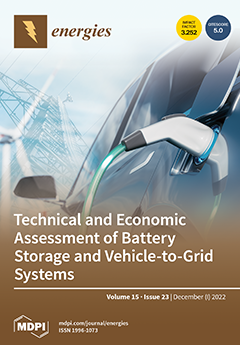Open AccessArticle
Study on the Accuracy of Fracture Criteria in Predicting Fracture Characteristics of Granite with Different Occurrence Depths
by
Chenbo Liu, Gan Feng, Hongqiang Xie, Jilan Wang, Zhipan Duan, Ye Tao, Gongda Lu, Huining Xu, Yaoqing Hu, Chun Li, Yuefei Hu, Qiuhong Wu and Lu Chen
Cited by 5 | Viewed by 1198
Abstract
The fracture network of a deep geothermal reservoir forms the place for heat exchange between injected fluid and rock mass with high temperature. The fracture resistance ability of reservoir rocks will affect the formation of fracture-network structure, heat exchange and transmission characteristics, and
[...] Read more.
The fracture network of a deep geothermal reservoir forms the place for heat exchange between injected fluid and rock mass with high temperature. The fracture resistance ability of reservoir rocks will affect the formation of fracture-network structure, heat exchange and transmission characteristics, and reservoir mechanical stability. However, there are few reports on the fracture toughness and trajectory prediction of geothermal reservoirs with different depths. In this paper, the modified maximum tangential stress criterion (MMTS) is analyzed. The results show that the experimental data are significantly different from the theoretical estimate of MMTS under the influence of different occurrence depths. It is found that the fracture process zone (FPZ) seriously affects the accuracy of predicting fracture initiation angle and mixed-mode (I+II) fracture toughness by MMTS. The FPZ value, considering the influence of different occurrence depths, is modified, and the accuracy of MMTS in predicting the fracture mechanical characteristics of granite is improved. In addition, the mechanical test results show that the Brazilian splitting strength (
σt) of granite fluctuates increase with the increase in temperature. With the increase in deviatoric stress, the Brazilian splitting strength and the Brazilian splitting modulus of rock show a trend of first increasing, then decreasing, and then increasing.
Full article
►▼
Show Figures





